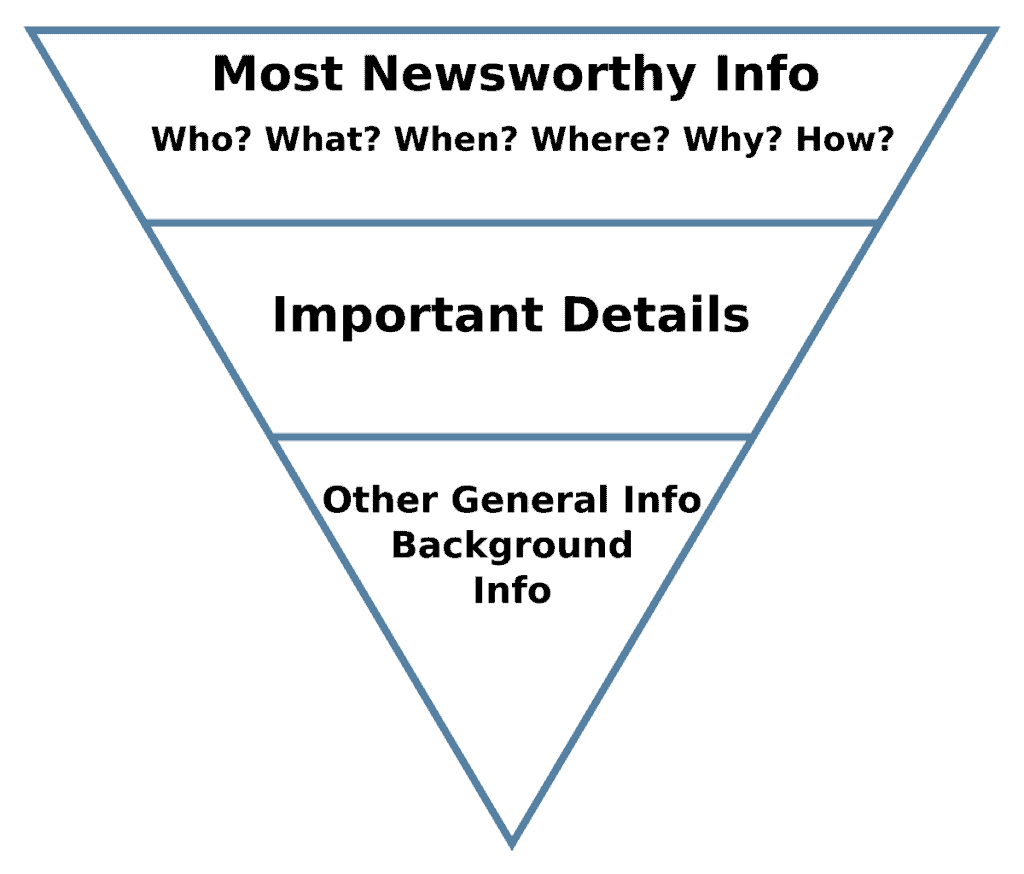
What Is Website Readability and How Do I Improve It?

How do you define readability? When it comes to content marketing, readability is all about reaching readers with writing that is easy to understand. However, there is much more to learn about readability and how to use it, So, what is readability? We’ll tell you everything you need to know in this comprehensive guide.
What Is Readability?

Readability is the measure of how well readers can understand a section of text. Website readability is how well visitors can understand the content on your website. There are many factors that determine low or high readability scores. Some of these include the complexity of words, sentence length, and legibility.
When Google and other search engines rank content, the algorithm determines whether a page is relevant to the search term and easy for readers to understand. Webpage readability can improve the content experience for your audience and potentially boost your site’s SEO.
Why Define Readability and Why Is It Important?
As search engine algorithms process the endless flow of uploaded content, they become ever-more adept at understanding and replicating human language. These programs check each URL for its usefulness to readers, which includes the average person’s ability to comprehend the message. Simply put, your readers will have a better experience when your content is easy to read. This can help create a sense of trust and affinity with your brand.
So it’s important to incorporate readability with every piece of content you write. It may be in your best interest to invest in website content writing services. Here are a few advantages of blog readability.
Advantages of Improved Readability

In addition to connecting with your audience and increasing the impact of your brand message, other benefits of readable content include:
- Improvement in SEO metrics such as the amount of time spent on a page, the exit rate, the bounce rate, the total number of visits, the conversion rate and the number of links and shares. Readers who can’t quickly understand the message won’t stay long on a page, and they won’t recommend it to their friends and followers.
- Voice search is a significant and rapidly growing sector. The more readable your content, the more likely it is to appear in relevant results from Siri, Google, Alexa and similar AI assistants. To optimize for voice search, read your paragraphs out loud. Do they get right to the point and answer your target search questions, or do they introduce irrelevant information before reaching the meat of the answer? Avoid the latter approach.
- Sites that score high for readability tend to have a lower bounce rate than more challenging sites. If the visitor struggles to understand your content at first glance, he or she will move on quickly and be unlikely to return.
- Higher user experience scores from Google are given to sites that are easy to read and understand. While the company does not publish its algorithm, those who study it think that readability falls under UX (User Experience). This likely carries about the same importance as keywords when it comes to ranking.
Disadvantages of Poor Readability
According to the Content Marketing Institute, poor readability can lead to a lack of audience engagement with and trust in your brand. It can also cause a poor return on investment for your content marketing dollars as well as lost revenue and customers.
The bottom line: Readability enables effective communication with your target audience. You’ve already spent so much time crafting your brand, why not do what it takes to ensure readers understand your message? Learn to define readability in each piece of content you write to get the most investment in the long run.
How Can I Test the Readability of a Website?

You and your web content writer can choose from a few different tools to check the reading difficulty of each item you publish. Each of these tools has its own formula to determine and define readability. However, most account for the number of words in a sentence, the number of words in a paragraph, and the number and length of sentences. The most common resources include:
- Flesch-Kincaid, which is even used by the United States military to determine the readability of manuals and materials. This index scores content on a scale of 0 to 100 for reading ease. It also provides a grade level from 1 to 12. For example, text with a reading ease score of about 80 could be easily understood by most sixth-grade students.
- Gunning-Fog, an index that determines the approximate number of years of education required to understand a page of text. This tool looks at the percentage of difficult words in the passage as well as the average length of each sentence.
- Coleman-Lieu Index, which defines readability by looking at the number of letters in a piece of writing rather than syllables or words. Like Flesch-Kincaid, this index provides a grade level at which the text should be easily understood.
- Automated Readability Index, which looks at both word and sentence structure. The ARI also provides a grade-level score for your writing.
When you first consider readability, you may want to use more than one of these tools to check your content readability. Doing so can improve your familiarity with the factors that make a text easier to read. This will help you buy website content written with an understanding of these considerations.
Setting a Readability Target for Your Site

According to data from the National Adult Literacy Survey, up to 23% of U.S. adults have very deficient literacy skills while up to 28% of adults have limited literacy skills. In addition, poor literacy skills disproportionately affect adults older than age 65 as well as minority groups.
Most literacy experts recommend aiming for about an eighth-grade reading level on content meant for the general public. This is also the reading level recommendation from the National Library of Medicine for medical documents. The international Web Accessibility Content Guidelines are designed to keep the internet accessible for everyone. They call for using short and simple sentences in web content.
However, a higher grade level score is often appropriate for technical content that targets doctors, scientists or other specialized groups. The federal Agency for Healthcare Quality and Research says that most Americans read at a grade level three to five years below the highest completed grade.
With this information in mind, you can buy website content written at an appropriate reading level for your audience. For example, if your brand’s audience consists of college professors who have completed a Ph.D., ask your web content writer to aim for about the 12th-grade level.
Keep in mind, though, that even technical, complicated material can benefit from the readability tips below. Learning to define readability in your content will benefit all writers and all content. Above anything else, make sure your content speaks a language that’s familiar to your audience, whether that means scientific jargon or everyday English.
Why is content readability so important? 📖📚 Up to 23% of U.S. adults have very deficient literacy skills while up to 28% of adults have limited literacy skills. Share on X
How Can I Improve Readability?

First, you’ll need to understand whether readers may struggle to comprehend your published content. Run existing text through a free online tool like Grammarly or the WebFX Readerly Test Tool. You can also check readability in Microsoft Word when you run a spell check on your document. If your website runs on WordPress, you can use a plug-in to test webpage readability as you upload content for publication.
You may specialize in a technical niche that requires sophisticated language and jargon. If not, you should make adjustments if you find your writing regularly exceeds the eighth-grade reading level. Now that you can define readability for all types of audiences, try these tips to lower the language level used by you or your web content writer.
Shorten Sentences and Paragraphs
Try to be clear, straightforward and direct when communicating with your readers. Not sure where to start? Find conjunctions like “and” and “but,” then break up the sentences where these connectors appear. Check each sentence to make sure it contains just one concept. When in doubt, use nine to 13 words per sentence as a benchmark. Cut unnecessary descriptors and adverbs when they don’t add to your meaning.
Nothing will turn off a reader faster than a long, gray block of text. Aim for three to five sentences per paragraph for web content. Use relevant H2 headings to guide readers every three to five paragraphs.
Whether writing long or short content, each section should have a clear focus. It should answer a reader question, address a pain point or illustrate a useful strategy. Cut out redundant sentences as well as those that diverge from the message. Readability can often be improved with the help of a proofreader or editor.
Stick to Basic Vocabulary
Obviously, you don’t want to talk down to or bore your readers, so it’s OK to incorporate a colorful turn of phrase in your content. In general, however, avoid using complex language when a simple word will do. “Utilize” vs. “use” is one of the most pervasive examples of an overly complicated word that often gets swapped out for a shorter alternative.
Consider also editing out idioms and abstract concepts. These may be difficult to comprehend for those with limited literacy or English language proficiency.

If you must use more complicated terms when producing content for a general audience, make sure to define each term clearly the first time you use it. For example, make sure readers know that hypertension means high blood pressure. Try to use the same term consistently throughout the content when writing for readers who may have literacy challenges.
Create Multiple Entry Points
The format of your web content also significantly influences how to define readability in your content. According to Medium, visitors may experience eye fatigue or struggle with comprehension if your site requires rapid eye movement, slows down their reading speed or perception ability, or creates problems with visibility or peripheral vision.
Headings
Fortunately, these issues are easy to solve with some careful content editing. Remember those H2 headings? You can also add H3s and even H4s for long-form content. Using an increasingly smaller font helps show hierarchy. These smaller subheads serve as signposts that help your reader navigate the content.
Visual Interest
Sidebars, images and infographics also help even a casual visitor comprehend your brand and message. Numbered and bulleted lists are also quite effective, especially when you need to break up long blocks of text.
Font Size

In addition to multiple points of entry as described above, use a sans-serif 14-point or 16-point font and ask your designer to include plenty of white space on the page. These design strategies make your content look inviting. Spot color, images and graphics can help guide your reader through the content. The SEOPressor blog cites a “Golden Ratio” of one image for every 75 to 100 words to encourage social shares of your content.
Pay Attention to Active Voice
Active sentence structure tends to be easier to comprehend than a more complex, roundabout passive structure. Check to see if your sentence has a strong verb that drives the action. Online grammar check tools like the Hemingway Editor can help your writer identify and eliminate instances of passive voice when you buy website content. Eliminating passive voice is a great way to improve and define readability on your website.
Use a Conversational Tone
As you write your first draft (or read a submission from your web content writer), pretend you’re discussing it with a friend. The information should be easy to follow and have a friendly tone.
After you shape your message, you can go back and polish it to make sure the copy is error-free and appropriate for your audience. Keep things conversational unless your content truly requires a formal tone. Deciphering complex language can be exhausting for readers at all levels.
Remember the Inverted Pyramid
Anyone who has taken even a single journalism class in school remembers this framework. Though the inverted pyramid was designed for news articles, it can work well for your content too. Lead each piece of content with the most crucial information. Then, arrange the rest of the information from least to most important. Even if readers don’t spend a lot of time on your page, they will get the gist of your message.

Know Your Audience
What is readability without an audience who reads? If you’re publishing content on the web, you should already have a broad view of your readers, what they like and where they spend time online. This includes an understanding of the average education level and common professions among your audience.
You may need to buy website content that explains a complex concept. If you are publishing it for an amateur audience, consider having a friend review the article for comprehension. Makes sure they aren’t very familiar with the concept so that they can define the readability of the piece in a way that most people will be able to understand.
Before publishing any content, read it out loud. Doing so can help identify areas where the message becomes confusing, loses focus or drags because of too many words. When you buy website content, address the importance of readability in the brief you provide your web content writer. Ask him or her to review the tips above and apply them.
Where To Buy Website Content That’s Readable
With this guide, you’ll be prepared to prioritize and define readability for the benefit of your entire audience. When you work with a professional writer from BKA Content, we’ll ensure that all your orders comply with your brand’s established webpage readability standards. With your input, our writers can know what readability standard you are looking for. Order custom creation of articles, blog posts and longform content or buy website content from our online Content Shop. Get in touch today to learn more about the services offered by BKA Content.
- 7 Ways to Blog Faster and Better Without Losing Your Mind - December 16, 2023
- The Business of Blogging: How To Make Money With Profitable Posts - December 9, 2023
- How To Do YouTube Content Marketing - December 8, 2023

